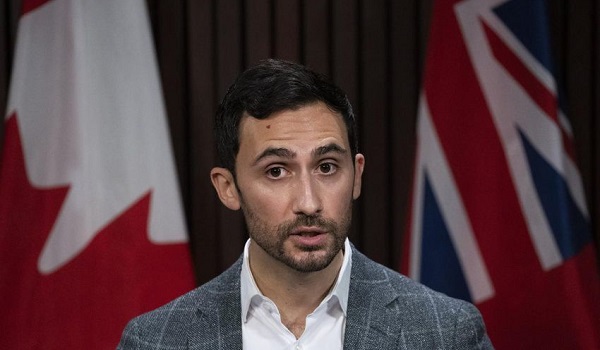Effect of Canada’s study permit cap on where international students are coming from
Canada’s new restrictions on study permits will change colleges’ and universities’ admission strategy, blunting the country’s recent effort to diversify its international student body, experts warn.
Canada has sought to bring in students from a host of countries to avoid having all its eggs in one basket should relations with one particular nation suddenly deteriorate. It has also been part of an effort to enrich the learning experience on campuses by bringing in diverse perspectives.
With the federal government reducing incoming international student intake by 35 per cent this year, post-secondary institutions, especially those in Ontario, are going to bet on recruiting students from countries with high study permit approval rates historically, to ensure admitted students can come, fill the class and pay tuition fees.
“Whoever colleges and universities are giving their letter of acceptance to, they are going to get the maximum enrolment and tuition dollar,” said immigration lawyer Zeynab Ziaie, whose firm handles a high international student caseload.
“The ways to minimize risk would be to, for the most part, avoid countries that are going to be typically high-risk.”
Under the cap, Ottawa will only process a limited number of study permit applications from institutions in each province. If an application is refused because officials don’t believe the applicant is genuine or has enough money to complete the study, that potential enrolment spot will be wasted.
Those high-risk applications are primarily from African countries, which have also seen the fastest international enrolment growth in Canada in recent years.
Immigration department data obtained by ApplyBoard showed Indian and Chinese students, accounted for 41 per cent and 10 per cent, respectively, of the one million study permit holders in Canada in 2023.
For years, the Canadian government as well as colleges and universities have invested in diversifying where students are coming from to lower the risks of suddenly losing enrolments due to geopolitical events, such as during Canada’s diplomatic spats with Saudi Arabia in 2018 and India in 2023.
Last year, eight of the 10 fastest-growing student populations came from African countries: Guinea, Ghana, Nigeria, Rwanda, Cameroon, Ivory Coast, Senegal and Algeria. Almost 10 per cent or 96,370 of study permit holders came from the eight countries, with 46,000 from Nigeria alone.
A parliamentary committee report in 2022 confirmed high refusal rates particularly for students from francophone Africa and Africa, more broadly, driven partly by racial bias and partly by different required documentation and stricter scrutiny in different parts of the world.
Study permit approval rates for African applicants hovered just below 30 per cent before hitting a low of 22 per cent in 2020 at the onset of the pandemic. But they rose to 30 per cent in 2021 and reached 36 per cent in 2022, compared to 61 per cent for the rest of the world.
“We’re going to see the diversity (of students) becoming undone,” said Meti Basiri, co-founder and CEO of ApplyBoard, an online marketplace for learning institutions and international students. “You’re going to see decreasing numbers of African students coming to Canada, not because they’re not interested. It’s just because the institutions are not going to use their quotas for countries with lower visa approvals.”
Ziaie said colleges and universities are also more likely going to offer admission to applicants from one of the 14 countries currently included in a special program to fast-track study permit processing if they already have a guaranteed investment certificate in Canada to cover the cost of living and proof of tuition payment for the first year of study.

But to qualify, they must come from Antigua and Barbuda, Brazil, China, Colombia, Costa Rica, India, Morocco, Pakistan, Peru, the Philippines, Senegal, Saint Vincent and the Grenadines, Trinidad and Tobago, or Vietnam.
“What’s going to happen is that the pool of people who are going to have the opportunity to apply for permanent residency is greatly determined by who gets the study permits,” said Ziaie. “If we’re systematically excluding people from certain countries to even have this opportunity to come to Canada and study, it would impact the composition of people, who would have the opportunity to apply for permanent residency two, three, four years down the line.”
According to the Immigration Department, each province is going to be allotted a fixed number of new study permits this year based on population size, and provincial governments are responsible for assigning them to the post-secondary institutions authorized to take in international students.
In Ontario, where the number of study permits is expected to drop by 133,404, Ziaie said Queen’s Park should base the allocation to individual institutions on their international enrolment back in 2018, before it spiked from 567,000 to a million in the last five years.
While the plan is meant to rein in the fast-growing international student program and ensure communities have the capacities to accommodate them in terms of housing, jobs and other supports, both Ziaie and Basiri said there’s nothing to stop international students from gravitating to Ontario and British Columbia, their most popular destinations.
Unless immigration officials are going to tie students’ approved study permits to a specific college or university, the experts said they are free to change schools in a different province upon arrival without having to apply for a new study permit, which makes the highly touted federal redistribution scheme essentially meaningless.
Basiri said some international students, known as “jumpers,” do apply to post-secondary education institutions in provinces where they have a better chance of getting an admission letter — and study permits — and once in Canada, apply and transfer to another school in Greater Toronto or Vancouver.
“That’s going to be a significant problem six months from now,” said Basiri. “The loophole exists and we need to address that.”
Since Immigration Minister Marc Miller announced the cap on Jan. 22, Basiri said only about 50 per cent of the students with an acceptance letter have paid their deposits to reserve their seats in the past month, which he sees as their lack of commitment to studying in Canada amid the uncertainty.
He said the “big four” hosts — Australia (six per cent), Canada (10 per cent), the United States (17 per cent) and the U.K. (11 per cent) — have seen their market share down by four percentage points to just 44 per cent of the 6.4 million students studied abroad in 2023 from before the pandemic. Other countries such as Germany, Japan, Spain, the Netherlands and Argentina have seen their numbers up.
“That’s where I’m worried about,” said Basiri. “Five years from now, how are we going to recover from that brand reputation when the world is becoming more competitive?”
This article was reported by The Star














